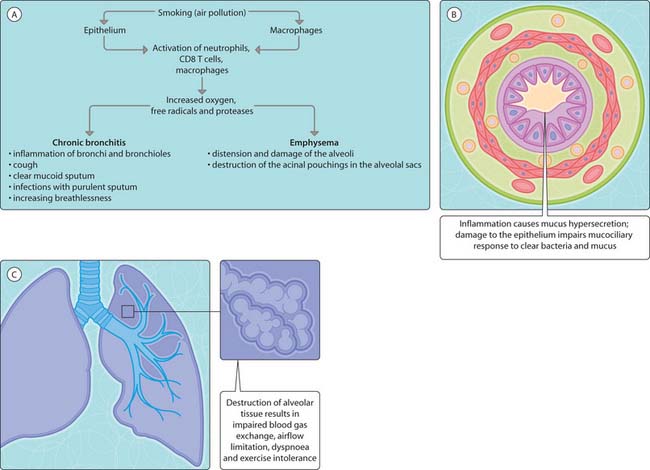22 Respiratory system
chronic obstructive pulmonary disease
Chronic obstructive pulmonary disease (COPD) is characterized by airflow obstruction that is partly reversible and progressively deteriorates. Those who suffer from COPD have reduced lung function (as expressed by forced expiratory volume in one second; FEV1) and exacerbation of symptoms (including cough and mucus secretion). Because of the nature of this disease, subjects can suffer from a diminished capacity to undertake physical exertion and have a poor quality of life. Cigarette smoking and exposure to indoor pollution (e.g. smoke from burning of biomass fuels) are major factors in its morbidity (Fig. 3.22.1). Smoking cessation should be encouraged because it is the only form of ‘treatment’ that has been shown to reduce disease progression. However, this can be difficult for a majority of smokers because of nicotine addiction. It is, therefore, of interest that the antidepressant bupropion given for a short period improves the likelihood of smoking abstinence.

Fig. 3.22.1 Chronic obstructive pulmonary disease.(A) Pathophysiology; (B) a bronchiole in bronchitis;(C) emphysema.
Drug treatment
Bronchodilators
Bronchodilator drugs can improve airflow obstruction but the poorly reversible nature of the obstruction in this disease means that only variable increases in baseline FEV1 will be demonstrated. However, the benefit to the patient comes in the form of an increase in ventilation at a lower functional residual capacity and reducing hyperinflation, which improves the capacity to exercise.
< div class='tao-gold-member'>
Stay updated, free articles. Join our Telegram channel

Full access? Get Clinical Tree




